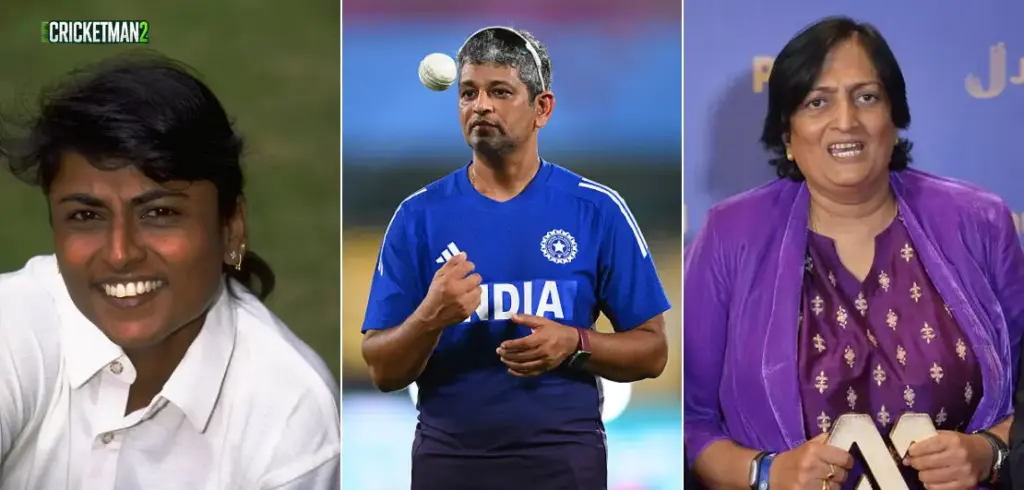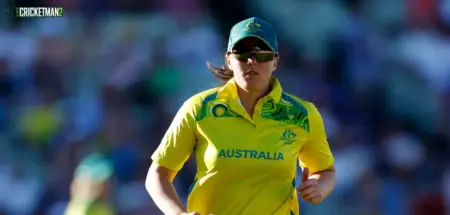The journey of the Indian Women’s Cricket Team has been one of steady growth, dedication, and transformation. Over the years, several coaches have guided the Women in Blue, shaping their skill, strategy, and mindset. From the early years of Sudha Shah to the modern leadership of Amol Muzumdar, each coach has played a vital role in building India into one of the strongest teams in world cricket.
Evolution of Coaching in Indian Women’s Cricket
Women’s cricket in India began gaining professional structure after the formation of the Women’s Cricket Association of India (WCAI) in 1973. However, it was only after the merger with the Board of Control for Cricket in India (BCCI) in 2006–07 that the national team began receiving consistent coaching support, staff development, and structured planning similar to the men’s team.
Since then, India’s women’s team has had a series of head coaches — each bringing unique leadership styles, tactical ideas, and challenges.
Read Also: List of Indian Cricket Team Coaches
List of Indian Women’s Cricket Team Head Coaches (2003–2025)
| Name | Tenure | Nationality | Notable Contributions |
|---|---|---|---|
| Sudha Shah | 2003–2007 | India | Among the first to bring structure and discipline into the team setup. |
| Shantha Rangaswamy | 2003–2007 | India | Former India captain who emphasized fitness and teamwork. |
| Sudha Shah (2nd Term) | 2008–2010 | India | Focused on building a young squad and improving fielding standards. |
| K.V.P. Rao | 2010 | India | Short tenure; worked on domestic-to-international transition. |
| Anju Jain | 2011–2013 | India | Guided India with a calm approach and emphasis on batting stability. |
| Tushar Arothe (1st Term) | 2013–2014 | India | Introduced new training systems and match intensity. |
| Purnima Rau (1st Term) | 2014 | India | Took over during transition; focused on mental conditioning. |
| Sudha Shah (3rd Term) | 2014 | India | Interim coach; helped the team regroup during a challenging period. |
| Purnima Rau (2nd Term) | 2015–2017 | India | Guided India to Asia Cup triumph and ODI World Cup qualifiers. |
| Tushar Arothe (2nd Term) | 2017–2018 | India | Led India to the 2017 ODI World Cup final; later replaced after player differences. |
| Ramesh Powar (1st Term) | 2018 | India | Short but eventful term; known for fitness-driven coaching. |
| W.V. Raman | 2018–2021 | India | Took India to the T20 World Cup 2020 final; emphasized batting depth. |
| Ramesh Powar (2nd Term) | 2021–2022 | India | Won silver at 2022 Commonwealth Games and Asia Cup titles. |
| Amol Muzumdar | 2023–Present | India | Revived confidence; led India to the 2025 Women’s World Cup final. |
Journey Through The Coaches: Era-by-Era Overview
Early Years (2003–2013): Laying the Foundation
The early era under Sudha Shah, Shantha Rangaswamy, and Anju Jain was about setting the groundwork. The focus was on building match temperament, improving basic fitness, and promoting young players. Despite limited exposure, the Indian women’s team began gaining international recognition.
Transition & Growth (2014–2018): Rising Competitiveness
This phase saw the team’s rise under Purnima Rau and Tushar Arothe. India clinched multiple Asia Cup titles and reached the 2017 ODI World Cup final, signaling their ability to challenge global giants like England and Australia. However, internal team differences and pressure led to frequent coaching changes.
Modern Era (2018–2022): Structured Approach & World Success
Under WV Raman, India reached the 2020 T20 World Cup final. His balanced coaching style emphasized player confidence and batting power. Ramesh Powar’s two stints brought tactical focus, improved bowling coordination, and historic wins — including the 2022 Commonwealth silver and Asia Cup victory.
Amol Muzumdar Era (2023–Present): Calm Leadership & Strategic Maturity
When Amol Muzumdar took over in October 2023, the team was struggling with inconsistency. Despite never playing for India, his understanding of the domestic circuit, communication skills, and trust-based leadership turned the tide.
Under his guidance:
- India reached the 2025 ODI World Cup final.
- Youngsters like Kranti Goud and Shree Charani emerged as match-winners.
- The dressing room environment became calmer and more confident.
Muzumdar’s approach relies on clarity, empathy, and trust. Instead of flashy speeches, he focuses on subtle motivation, allowing players to express themselves freely — a style that mirrors modern cricket management ideals.
Impact of Coaches on Team India’s Success
The changing leadership over the years has built India into one of the most balanced and mentally strong women’s sides in world cricket.
Major Achievements by Indian Women’s Team Under Different Coaches:
- Asia Cup Titles: 7 (2004, 2005–06, 2006, 2008, 2012, 2016, 2022)
- World Cup Finals: 2005, 2017, 2025
- T20 World Cup Final: 2020
- Commonwealth Games: Silver Medal (2022)
- Asian Games: Gold Medal (2022)
These results show the steady evolution from a developing unit to a championship-contending team under the influence of multiple coaching minds.
See Also:- What is a Casual Contract in Cricket?
The Road Ahead
With Amol Muzumdar at the helm and support staff like Aavishkar Salvi (Bowling Coach) and Munish Bali (Fielding Coach), India’s women’s cricket looks ready for a golden phase. The introduction of the Women’s Premier League (WPL) has also enhanced player exposure and fitness standards, complementing the national setup.
Muzumdar’s philosophy of “belief over experience” is shaping the next generation — balancing youth energy with senior leadership from Harmanpreet Kaur and Smriti Mandhana.
Conclusion
From the disciplined guidance of Sudha Shah to the empathetic leadership of Amol Muzumdar, the Indian Women’s Cricket Team has seen a rich legacy of coaching minds. Every phase added something — structure, belief, or professionalism.
Today, under Muzumdar, India stands just one step away from achieving the long-awaited World Cup victory — a dream nurtured by two decades of coaching evolution and resilience.




